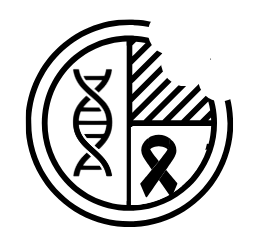Reading time: 4 minutes
Sneha Das
We are our genomes! Our genome is the DNA comprising roughly 3 billion genetic letters, called bases, that appear in a specific order to make us humans. The DNA encodes messages to make proteins and other biomolecules that work in concert to perform important bodily functions. But sometimes this well-oiled machine can go out of whack and can cause disease.
A group of diseases with the hallmark of uncontrolled growth and spread of abnormal cells is called cancer. More than 200 types of cancers originate in different parts of our body, and the definitive causes are not entirely understood. However, a majority of them are linked to genetic mutations. Mutations occur when bases are inappropriately added, deleted, substituted, or translocated in our DNA. Change of even a single base can potentially alter important cellular functions.
Since there is a correlation between mutations and disease, you might wonder if knowing all the cancer-causing mutations would allow us to find a cure. The Cancer Genome Atlas (TCGA) program was conceived with this exact goal. The landmark program was undertaken by two institutes within the National Institutes of Health (NIH), the National Cancer Institute (NCI), and the National Human Genome Research Institute (NHGRI). The aim was to characterize all the molecular changes that happen within cancer cells.
Francis Collins, the former director of the NIH, said in The Cancer Genome Atlas Legacy that when the TCGA program started in 2006, the idea of having a cancer genome atlas was controversial. Many scientists were skeptical because they thought cancer cells would have too many mutations and identifying the relevant ones would not be feasible. But a few years in, the scientific community considered TCGA a major success. Tumor and normal tissue samples were collected from 11,000 patients. Researchers from 20 collaborating institutions sequenced and analyzed the genomes of 33 different cancer types, including 10 rare cancers.
The TCGA project generated comprehensive multi-dimensional maps of genetic changes in cancer cells called the ‘Cancer Genome Atlas’. A major finding was that the genes frequently mutated in cancer are often not unique to just one cancer type, but are found across cancer types.
Now that we have this information, how is it helpful? Because of TCGA, we have a better classification of cancer types and subtypes than we had before. One TCGA study found that the basal-like subtype of breast cancer has genetically similar alterations to the serous subtype of ovarian cancer. These days, cancers are not just classified by their tissue of origin, but also by their distinct set of genetic alterations. Many cancer patients are now enrolled in clinical trials based on genetic mutations like the NCI-MATCH Trial (Molecular Analysis for Therapy Choice).
Once cancers are better classified, it is possible to treat patients with drugs and therapeutics tailored to their disease subtype. For example, a TCGA study found that a specific subtype of glioblastoma (GBM) tumor lacked DNA methylation signatures. When bases of DNA are methylated, it can affect gene expression. Tumors of the methylation-deficient GBM subtype frequently lost another important DNA repair function called mismatch repair after treatment with a standard chemotherapy regime involving alkylating agents. Clinicians had previously observed that some GBM patients became resistant to future treatment after an initial round of chemotherapy. This study shed light on the molecular basis of GBM chemotherapy resistance.
The field of oncology is heading towards precision medicine, where knowledge of genetic alterations from genome sequencing dictates the optimal drug or therapy choice for an individual patient. If treatments for cancers with specific genetic mutations do not exist, the information from the TCGA study can be utilized for drug discovery. Several such drug discovery initiatives are focusing on rare or previously overlooked targets with the hope of providing useful therapeutics to subsets of patients.
When the TCGA study started sequencing different cancer cells, extracting meaningful information from the sequencing data was incredibly challenging. To put things into perspective, the DNA from one single cell in our body is invisible to the naked eye, yet as long as a 6-foot-tall person. To accurately uncover the order of 3 billion genetic bases is no easy task! This extensive study was only possible by the innovative technical advances in high-throughput sequencing and bioinformatics.
The TCGA program generated more than 2.5 petabytes of data, comparable to 212,000 DVDs. A collection of 35 scientific papers called the Pan-Cancer Atlas was also published in 2018. But the best part is that the data is not restricted to scientists and clinicians, but is publicly available to patients and patient advocates. Anyone interested in cancer research can explore The Cancer Genome Atlas!
Edited by Michael Marand
Image by Gerd Altmann from Pixabay


Leave a comment